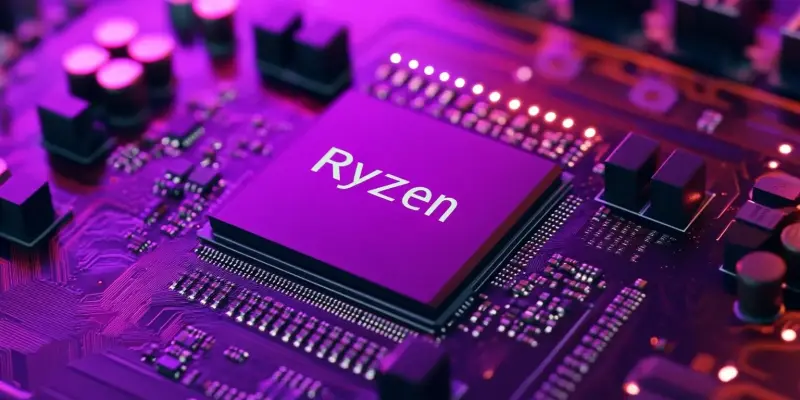In a recent leak, the AMD Ryzen 9 9950X3D has taken the tech community by storm, showcasing groundbreaking specifications that are set to revolutionize gaming performance. The processor, expected to debut at CES 2025, features a staggering boost clock of 5.65 GHz and is equipped with a total of 128 MB L3 cache, cleverly divided into a 96 + 32 MB configuration. Maintaining the same clock speeds as its non-X3D counterpart, the Ryzen 9950X, the 9950X3D sports a 170W TDP, confirming AMD’s commitment to delivering powerful yet efficient processors. The architecture of the 9950X3D reveals two Core Complex Dies (CCDs), each armed with eight cores and 32 MB of L3 cache. This is further enhanced by an additional 64 MB of L3 cache chiplet situated under one CCD, bringing the total L3 cache to an impressive 128 MB. Combined with L2 cache, the processor reaches a total cache of 144 MB, ensuring a substantial improvement in data retrieval and overall performance.
Enhanced Gaming and Productivity
The inclusion of AMD’s groundbreaking 3D V-Cache technology in the Ryzen 9 9950X3D is a notable advancement in gaming performance. By expanding the L3 cache, this technology offers gamers improved frame rates and smoother gameplay experiences. The extra cache is positioned directly underneath the CCD, enhancing cooling efficiency. This strategic placement minimizes thermal throttling and supports higher, more stable core clocks, opening the door for overclocking without typical risks. Unlike past generations, the Ryzen 9 9950X3D sustains productivity software performance while delivering exceptional gaming capabilities. This balance ensures users don’t have to compromise on multitasking or professional application performance.
The announcement of the Ryzen 9 9950X3D, along with upcoming releases like FSR 4 and RDNA 4-based graphics cards, highlights AMD’s commitment to merging high performance with innovative cooling methods. This approach aims to develop future processors that cater to both gamers and productivity users. AMD’s goal is to push CPU performance limits without sacrificing efficiency or thermal management, ensuring their next-gen processors are both powerful and reliable.

